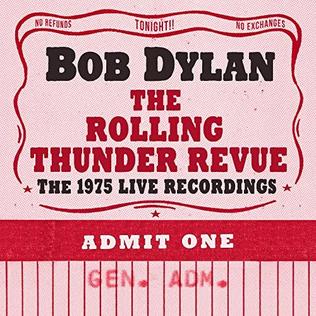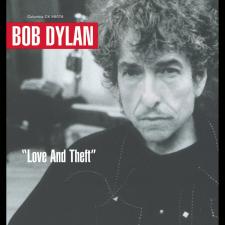Whether or not he was really truly an acid casualty, Syd Barrett’s stilted potential has been the cause of much debate since his virtual disappearance from the music scene. He left a fairly finite set of completed (read: recorded) songs behind, and it’s likely that if anything else of value were out there, it would have been discovered by now. As it is, his body of work is a matter of personal taste, and in some cases needs to be taken within a certain context.
Despite having kicked him out of the band, the other members of Pink Floyd felt a certain responsibility for Syd, not least making sure his royalty checks kept arriving. When he went back to the studio to record his own albums, they were on hand to help out, along with some other musical friends.
 The Madcap Laughs contains some catchy songs mixed with more chaotic tracks and some mesmerizing if sad acoustic performances of demo quality. In most cases, Syd played and sang by himself, and the tracks were augmented by the likes of David Gilmour, Roger Waters, Jerry Shirley of Humble Pie and three guys from Soft Machine, who did their best to accompany Syd’s prerecorded idiosyncrasies.
The Madcap Laughs contains some catchy songs mixed with more chaotic tracks and some mesmerizing if sad acoustic performances of demo quality. In most cases, Syd played and sang by himself, and the tracks were augmented by the likes of David Gilmour, Roger Waters, Jerry Shirley of Humble Pie and three guys from Soft Machine, who did their best to accompany Syd’s prerecorded idiosyncrasies.
The opening “Terrapin” is the slowest song he’d put his name to yet, an easy lope that doesn’t predict the more chaotic “No Good Trying”. “Love You” is catchier but still nutty, as is the rhythmically challenged “No Man’s Land”. “Dark Globe” is good enough to leave simple, while “Here I Go” is utterly charming. Even with the acoustic guitar driving it, “Octopus” is a decent Floyd coulda-been, and his casting of the rare James Joyce poem “Golden Hair” is very inspired. The mild menace of “Long Gone” leads into the stretch from “She Took A Long Cold Look” through “Feel” and “If It’s In You”, depicting the sounds of a man barely able to keep up with himself. That leaves only “Late Night” to spin towards an uncertain end.
 Soon after the release of The Madcap Laughs, Syd was back in the studio, this time with Gilmour and Rick Wright, plus Jerry Shirley on drums. Together they tried to work more quickly and cohesively, and sometimes it works. As a whole Barrett is a bit heavier, but some of the whimsy has been lost in the process.
Soon after the release of The Madcap Laughs, Syd was back in the studio, this time with Gilmour and Rick Wright, plus Jerry Shirley on drums. Together they tried to work more quickly and cohesively, and sometimes it works. As a whole Barrett is a bit heavier, but some of the whimsy has been lost in the process.
“Baby Lemonade” is another excellent opener, and “Love Song” has a lot of Wright’s fingerprints on it, just as “Dominoes” benefits from the jam. But “It Is Obvious”, “Rats”, and “Maisie” are aimless, each of the latter using just a single chord. “Gigolo Aunt” has gained enough status to become a deserving favorite, then “Waving My Arms In The Air” and “I Never Lied To You” repeat the wandering of “It Is Obvious”. “Wined And Dined” isn’t quite finished, and “Wolfpack” is another challenging listen, leaving only “Effervescing Elephant” and its tuba to make us smile.
 Despite occasional sightings and attempts, Syd’s musical career had all but finished before the band that left him behind achieved worldwide superstardom. But they were always quick to credit his influence, and the rerelease of his two solo albums in a single two-record set in 1974 kept his work on the shelves. The albums were duly issued on CD in the late ‘80s, and the new trend of vault-digging resulted in more product. His one solo BBC session—all five songs of it—was reissued several times, but Capitol, who owned the studio tapes, did their best to offer quantity and quality with Opel, an LP’s worth of alternates and even some outtakes, anchored by the soaring title track, which is one of his best. The other “new” songs range from early experiments (“Swan Lee” and “Lanky”) to acoustic studio demos (“Dolly Rocker”, “Word Song”, “Birdie Hop”, “Let’s Split”, “Milky Way”) which are mostly frustrating because they’re just not quite there. Still, it’s essential for the story, and sequenced well, ending with an early instrumental sketch of “Golden Hair”.
Despite occasional sightings and attempts, Syd’s musical career had all but finished before the band that left him behind achieved worldwide superstardom. But they were always quick to credit his influence, and the rerelease of his two solo albums in a single two-record set in 1974 kept his work on the shelves. The albums were duly issued on CD in the late ‘80s, and the new trend of vault-digging resulted in more product. His one solo BBC session—all five songs of it—was reissued several times, but Capitol, who owned the studio tapes, did their best to offer quantity and quality with Opel, an LP’s worth of alternates and even some outtakes, anchored by the soaring title track, which is one of his best. The other “new” songs range from early experiments (“Swan Lee” and “Lanky”) to acoustic studio demos (“Dolly Rocker”, “Word Song”, “Birdie Hop”, “Let’s Split”, “Milky Way”) which are mostly frustrating because they’re just not quite there. Still, it’s essential for the story, and sequenced well, ending with an early instrumental sketch of “Golden Hair”.
Since everybody got their own box set soon enough, Crazy Diamond offered The Madcap Laughs, Barrett, and Opel, each bolstered by several extras, mostly first takes with no overdubs. For more casual fans, the single-disc compilation Wouldn’t You Miss Me? delivered the cream of his solo work, plus “Two Of A Kind” from the BBC session and the long-rumored “Bob Dylan Blues”. To play it even safer, 2010’s An Introduction To Syd Barrett added six Floyd tracks, including an alternate of “Matilda Mother”, to a dozen remastered solo selections—some of which included new bass overdubs by Gilmour—plus a download of the unreleased twenty-minute “Rhamadan” jam.
Syd Barrett The Madcap Laughs (1970)—3½
Syd Barrett Barrett (1970)—2½
Syd Barrett Opel (1988)—3
Syd Barrett Crazy Diamond (1993)—3
Syd Barrett The Best of Syd Barrett: Wouldn’t You Miss Me? (2001)—4
Syd Barrett An Introduction To Syd Barrett (2010)—4
 Something of a stopgap release appeared before the Floyd completed their next album, with the intention of promoting their earlier, less commercial work. Relics combined old singles and album tracks without any real attempt at completeness. Its subtitle, “A Bizarre Collection of Antiques and Curios”, couldn’t have been more apt.
Something of a stopgap release appeared before the Floyd completed their next album, with the intention of promoting their earlier, less commercial work. Relics combined old singles and album tracks without any real attempt at completeness. Its subtitle, “A Bizarre Collection of Antiques and Curios”, couldn’t have been more apt. 












